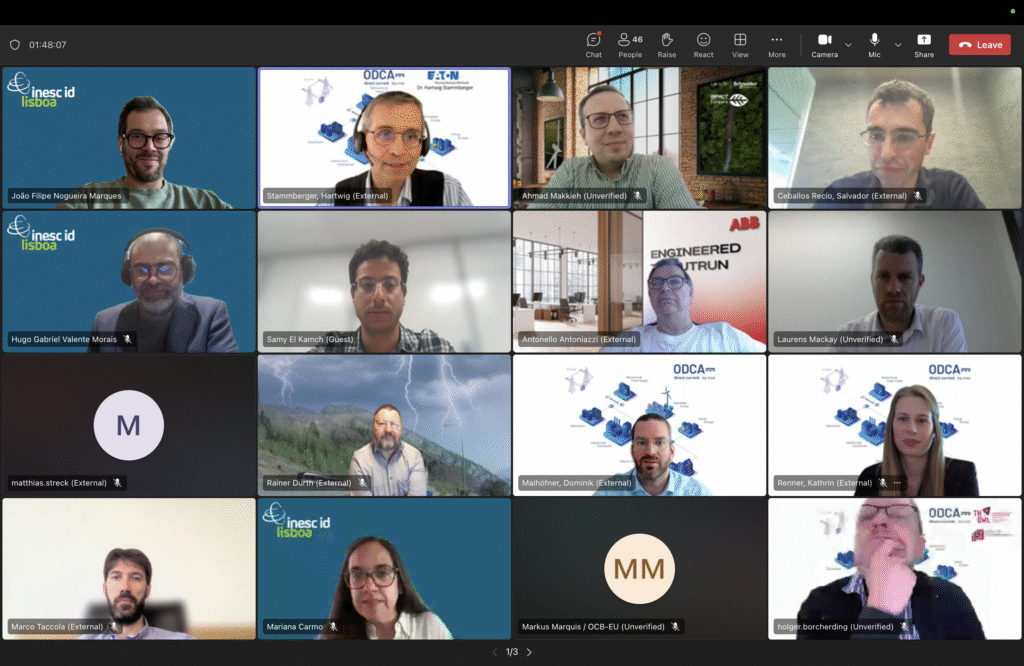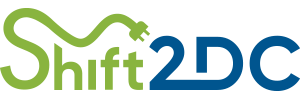
On May 27th, the Shift2DC project joined the Open Direct Current Alliance (ODCA) to host a webinar focused on the future of direct current (DC) technologies. The event brought together more than 80 participants, mostly ODCA members, offering a great chance for Shift2DC partners to share their latest innovations and strategies.
The webinar opened with a welcome note from ODCA’s Head of Working Party, Dominik Maihöfner, followed by a brief introduction to ODCA. Founded in 2022, ODCA is a group that brings together industry leaders, tech companies, and research institutions to promote DC power systems. Their goal is to promote the use of direct current (DC) in industrial applications and other key areas as a more efficient and sustainable alternative to traditional alternating current (AC) systems. They focus on creating open standards, sharing best practices, and supporting innovation that lowers energy loss and operating costs.
Hugo Morais, Shift2DC coordinator at INESC ID, then presented an overview of the project, highlighting the innovative DC technologies to be tested at four demonstration sites across Europe: two in Germany (for data centers and industry), one in France (for buildings), and one in Portugal (at the Port of Funchal, Madeira). These sites are testing both medium-voltage DC (MVDC) and low-voltage DC (LVDC) systems.
Following this overview, Shift2DC partners gave a short 5-minute pitch to showcase their work:
- Catherine Ngirwa (IST ID) shared insights on user adoption and how people perceive MVDC and LVDC solutions.
- Holger Krings (Phoenix Contact) presented the new solutions being developed in Germany, including a high-precision DC measurement devices that can be applied in multiple usages, a modular battery energy storage system (BESS) using DC/DC converters introducing more flexibility in the management of the production process, and a safe, easy-to-use connector system for field devices in DC networks.
- Oleksij Chumak (Eaton) introduced an Energy Management System (EMS) tool that will control LVDC grids and connected assets. This solution will be tested in the building demonstrator.
- Katharina Hetzenecker (RWTH) gave an update on RWTH’s Living Lab and the four use-cases under test in cluding MVDC/LVDC interfaces.
- Pedro Costa (INESC ID) introduced a real-time simulation model for DC power systems, to be used at the Portuguese demo site in Funchal Port (Madeira).
- Ahmad Makkieh (Schneider Electric) presented a new AC/DC converter that supports scalable DC grids applications.
- Samy El Kamch (Watt & Well) showcased a DC/DC V2X electric vehicle (EV) charger being developed for the building demo in France.
- Salvador Ceballos (Tecnalia) talked about a fast-response control method for distributed energy resources (DERs) in DC grids.
Following the presentations, the session shifted to a discussion among the participating experts, representing institutions from across Europe. All shared different perspectives on DC technology, including the use of solid-state and hybrid circuit breakers such as Phoenix Contact’s ELR HDC.
Participants also discussed the real-world use of demo sites in Germany, France, and Portugal, comparing commercial products and prototypes. Other topics included grid monitoring and integrating different DC Technologies.
During the discussion, experts also highlighted the importance of defining DC standards and identifying the most promising DC applications to focus on. This will allow to create an ecosystem where DC raises real advantages.
The webinar ended with a forward-thinking conversation on how DC and AC systems can work together. Instead of choosing one over the other, experts agreed that “the Future will be Hybrid”, combining both technologies for greater flexibility and efficiency.



